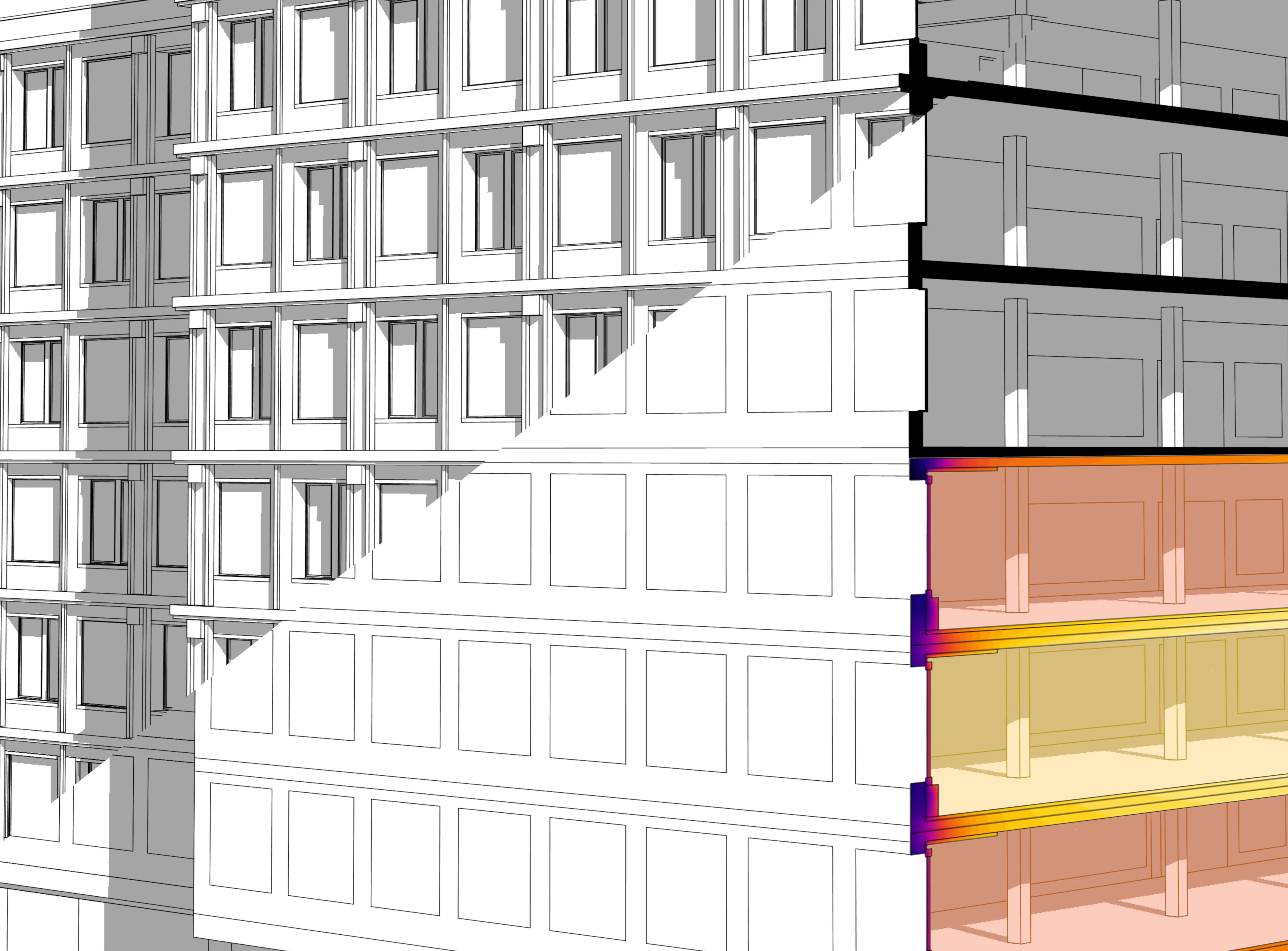Building simulation
Buildings influence our well-being, our productivity, and many social interactions. Much of our energy is converted in the building, and with the use of solar energy and environmental heat, modern buildings have also become energy producers. Large amounts of information, goods and people move about in buildings. To ensure that all these processes can be optimally supported in an increasingly digital world, data is continuously collected using sensors and measurement technology, and simulation and control technology is used to intervene in events. We support with computer simulations and sensor technology.

Many research questions from building simulation have been solved several decades ago, such as heat flows in walls, the complex situation around a window, air flows in different geometries, heat distribution over floor heating systems and radiators, etc. In this context, the academic world has developed over the years separately from the construction industry and has produced many sophisticated methods that today represent a great variety of analysis and prediction possibilities. Some simulation tools have proven themselves in design and many proposals are handled by specialized consulting service providers. Nevertheless, many construction projects today do not yet exploit their optimization potential. In our projects this gap is closed and simulation is used to create benefits in concrete applications.
Two megatrends do now support the use of computer simulation in the building sector:
- Climate change: due to the challenges of the energy transition, it is essential that buildings are optimized with respect to their energy demand and that the building envelope is used to exploit solar energy and environmental heat. Both topics can be supported by numerical simulations and sensor technology.
- Digitalization: a new wave of digitalization has swept the construction industry in recent years, creating the conditions for building simulation to be widely applied. The Internet of Things (IoT) will soon comprise measurement data from many parts of the building that were not previously connected to the digital world. We understand the digital twin as a heterogeneous collection of measurement and simulation data that provides the basis for (digital) services that improve the operation of the building.
Close to the application projects, we successfully use building simulation to generate added value in the current construction industry and to meet the current challenges with concrete solution proposals. In most cases, a combination with actual measured data is necessary to validate and calibrate the simulations.
Projekte
Here you can find a description of selected projects:
Building simulation with 3D architectural plans (link in German)
Supporting lean building technology with simulation (link in German)
Simulation of pedestrian flows
Room climate optimization from the digital twin (link in preparation)
Live data in the digital twin (link in preparation)
Measurement technology in cloud applications (link in preparation)
Artificial intelligence (AI) heatpump controller
Building energy assessment through aerial thermographic images (external project webpage)